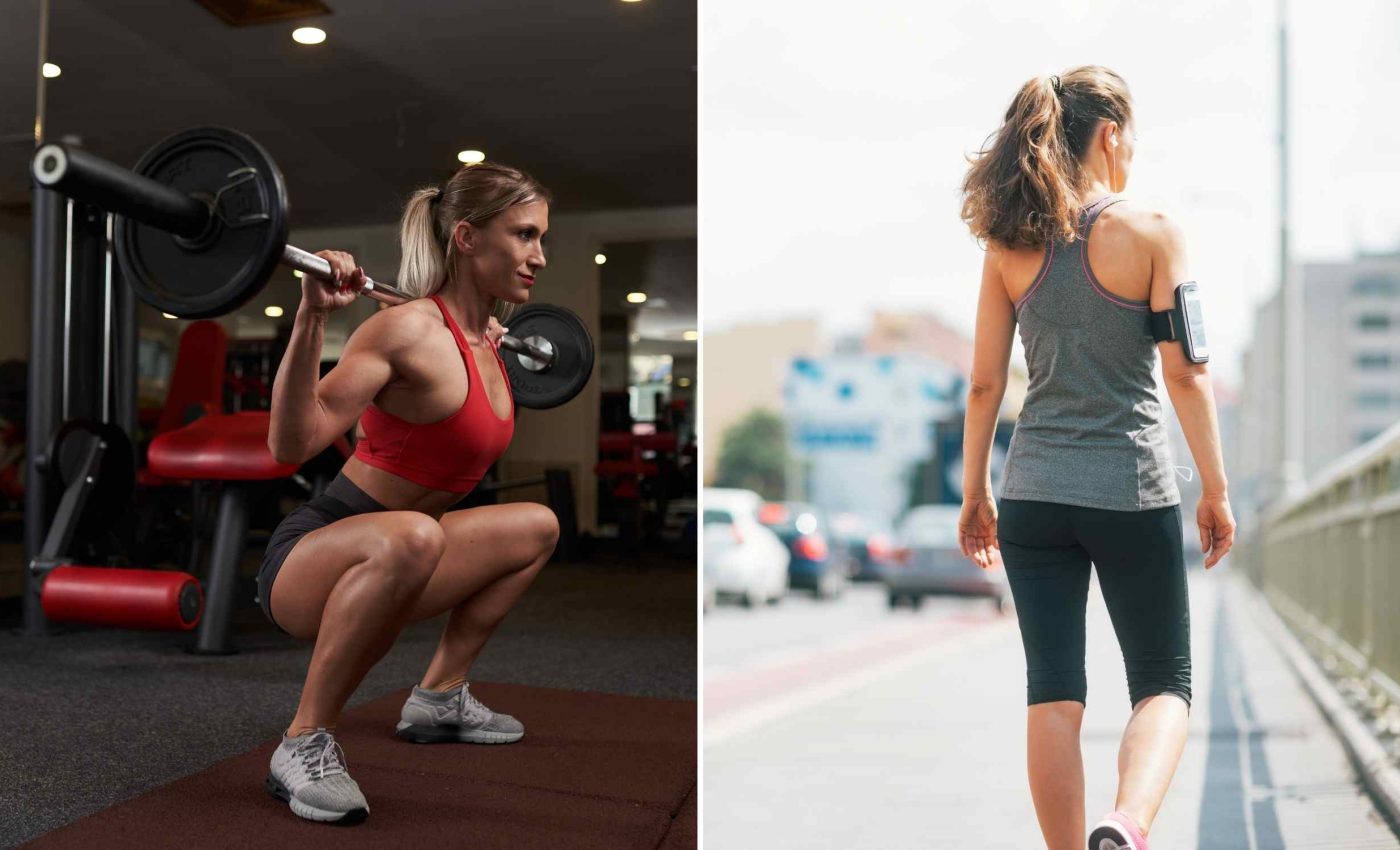
Squats vs walking: The definitive winner for reducing blood sugar
Our desks keep us glued to chairs for hours, yet our bodies keep score. After meals, our blood sugar spikes, particularly if we remain sedentary. Two fresh studies have now analyzed the respective benefits of walking and doing squats, in terms of their ability to lower those glucose surges.
One test pitted simple body‑weight squats against walking sessions of different lengths, to see which shrinks after‑meal sugar spikes. The contest delivered a surprise winner.
Squats and mini-walks win the day
Lead author Ying Gao of Zhejiang University guided 18 young men through four, single‑day trials that included long sitting, a half‑hour stroll, three‑minute mini‑walks every forty‑five minutes, or ten fast squats on the same clock.
The squat and frequent mini-walk conditions slashed postprandial sugar spikes by 21 percent, when compared with nonstop sitting.
The same sugar‑flattening effect almost doubled the benefit of the lone, 30‑minute walk. This indicates that muscles care more about timing than about total steps.
Importantly, energy burned was matched across conditions, so extra calorie loss was not the hero.
Deskbound adults spend more than 9 hours per day seated, on average, a pattern that is linked to higher diabetes risk, even in habitual exercisers.
Shifting some of that time toward burst‑style movement gives muscles periodic wake‑up calls without asking for gym clothes.
The advantage of squats
Squatting lights up the quads and glutes far more than an easy stroll. The trial found that higher averaged electromyogram amplitude in those big muscles tracked directly with lower blood sugar swings, while hamstring effort mattered less.
“Only increased aEMG in quadriceps and gluteal muscles was associated with a reduction in postprandial glycemic response,” the authors noted. More muscle fibers squeezing at once appear to pull extra sugar out of circulation.
Those same fibers are among the largest glycogen reservoirs in the body. Emptying them repeatedly during the workday sets the stage for later insulin‑assisted refilling, a cycle that may dampen glucose peaks in subsequent meals.
The walking paradox
Three‑minute strolls every 45 minutes came close to the squat effect, even though each break felt relaxed. Small bursts appear to wake up leg muscles repeatedly, keeping sugar disposal lines open throughout the day.
Still, the single, longer walk under‑performed. The data suggest that the body values frequent nudges over one heroic push, which echoes office studies where hourly movement trims cholesterol and insulin peaks.
Walking breaks also counteract stiffness, boost mood, and require no floor space. That makes them a friendly backup plan on days when squats are impractical (such as in narrow airplane aisles or crowded buses).
Lactate and GLUT4 link
Squats briefly cut off oxygen to working muscle, boosting lactate production. Laboratory work in human myotubes shows that “lactic acid has an important role in energy metabolism of human myotubes” and even raises glucose uptake three‑fold when it replaces sugar in the growth medium.
Higher lactate feeds a cellular message that orders more GLUT4 transporters to the muscle surface, the very gates that shuttle glucose inward.
Scientists agree that, in response to stimulation by insulin or exercise/muscle contraction, GLUT4 “translocates from intracellular storage vesicles to the muscle cell surface” where it plays an essential role in glucose transport.
The lactate shuttle also lets active muscles share this metabolite with the liver for fresh glucose production – forming a push‑and‑pull cycle that stabilizes blood sugar without sharp highs or lows.
Lasting ripple effects
“Enhanced skeletal muscle and whole body insulin sensitivity can persist for between 24 and 48 hours after one exercise session,” noted physiologist Gregory Cartee.
A single bout of exercise can thus keep muscles extra sensitive to insulin for up to two days, meaning that each squat break may buy prolonged metabolic calm.
Because squats recruit more fibers per second than walking, they may stretch that window even further, though larger trials will be needed to test this idea.
Even if the extra edge is small, the compounding effect over hundreds of workdays could be substantial.
Employers who are worried about productivity may find that adding a beep on the office clock every 45 minutes is cheaper than funding a corporate gym and easier than policing step counts.
Leveraging squats in daily life
Ten deep squats take roughly 20 seconds and require zero equipment. Set a 45‑minute timer, stand up, drop and rise ten times, then sit back down, and you will have matched the glucose benefit seen in the lab.
If knee pain rules out squats, a three‑minute hallway march delivers nearly the same payoff. What counts is breaking sitting time often and pushing large muscles hard enough to feel them work.
Pairing these movement snacks with balanced meals can amplify their punch, especially for people watching carbohydrate intake. Consistency beats intensity, so keep the breaks small, frequent, and sustainable.
Caveats and future research
The volunteers in Gao’s study were healthy young men, leaving questions about how older adults, women, or people with diabetes will respond.
Hormonal differences and joint limitations could modify the squat advantage, and researchers are already planning follow‑ups that include broader demographic groups.
Laboratory meals were standardized, yet real‑world diets vary wildly in sugar content. Future work will need to track continuous glucose monitors over weeks to see whether movement snacks tame everyday spikes triggered by pizza lunches and birthday cake.
Finally, scientists still debate the precise chain of molecular events between lactate, GLUT4, and long‑term insulin signaling.
Decoding that pathway could unlock new drug targets that mimic the down‑to‑earth prescription of standing up and moving every 45 minutes.
The study is published in Scandinavian Journal of Medicine & Science in Sports.
—–
Like what you read? Subscribe to our newsletter for engaging articles, exclusive content, and the latest updates.
Check us out on EarthSnap, a free app brought to you by Eric Ralls and Earth.com.
—–













